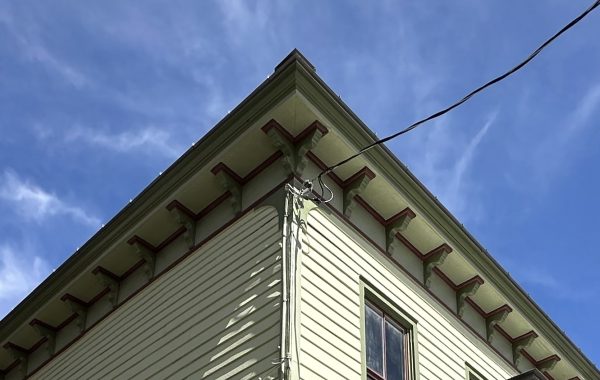Not all infrastructure is hidden – some, like elevated railroads, is more visible and audible than most people would prefer – but it often is and that can make it easy to forget. “The Cloud Under the Sea” by John Dzieza, with visuals by Kristen Radtke and Go Takayana, is an in-depth discussion of a topic that’s niche even by the standards of infrastructure geeks. The article is about the breakage and repairs of the underwater cables that carry communications – these days, the internet – from continent to continent, island to island. These are fiber-optic cables, carrying information as light traveling through glass, with much higher capacities than the copper cables carrying electric current that they replaced. Modern cable ships are small relative to freighters:

The first transatlantic cable, on the other hand, was laid by the largest ship in the world, the SS Great Eastern. That ship was basically a freak. The largest ship in existence before the Great Eastern was the SS Adriatic, 354 feet long and 3670 gross tons; the Great Eastern entered service in 1860, three years after the Adriatic at 692 feet long and 18,915 gross tons. No larger ship was built until 1899. The Great Eastern had sails, paddle-wheels, and propellers, and was basically too big for the marine technology of the day. The ship was a commercial failure, without a regular route or the ability to charge enough to cover the expenses of operation. However, the combination of paddle-wheels and propellers gave the ship surprisingly accurate movement, and the huge hull could hold an entire ocean’s worth of cable. Here’s Harper’s, in 1865, celebrating the successful completion of the first telegraph cable between Europe and North America, and quoting Puck in the process:

I’m fascinated by this topic even though it has no direct connection to anything I deal with. The philosophy of the work is similar, though: fix what we’ve got, keep it running, kick the can down the road. That last phrase is sometimes used as a pejorative in discussing buildings but if we’re honest about it, that’s all maintenance is. We can never fix everything so that it’s as good as new, but if we keep addressing the worst damage and try to address the problems that are causing the damage, we take our turn in maintaining it. The buildings that I work on are almost all older than me, mostly significantly older, and will hopefully be around long after I’m gone. I’m simply one in a long line of people working on them.




You must be logged in to post a comment.